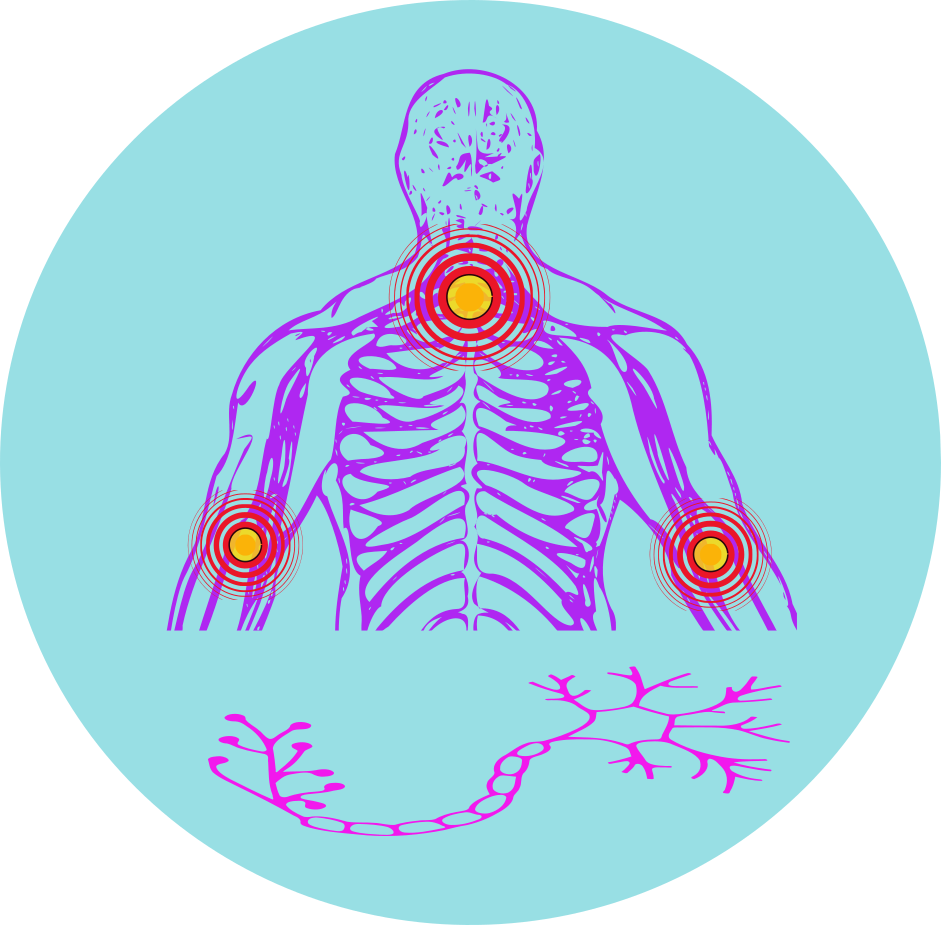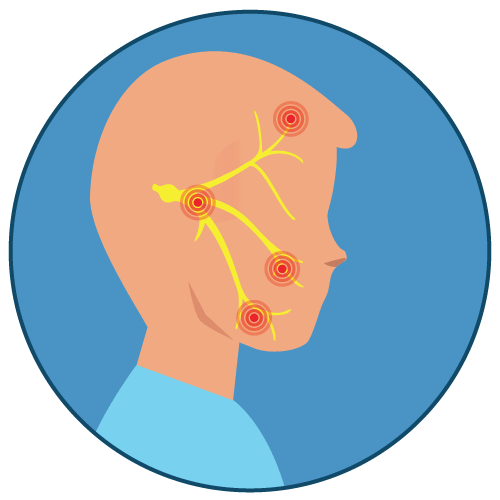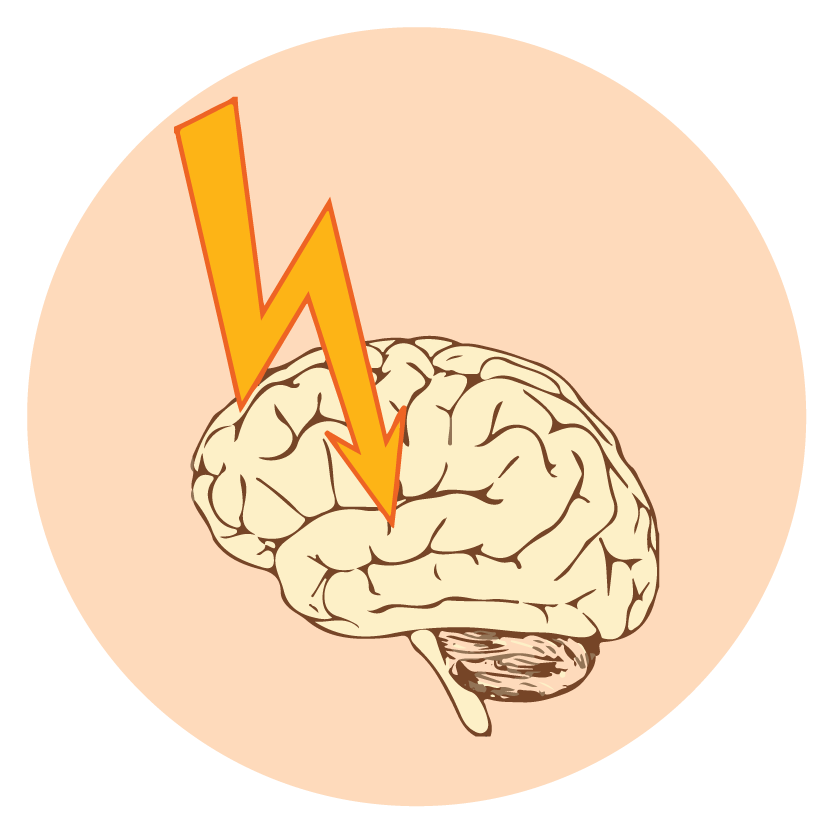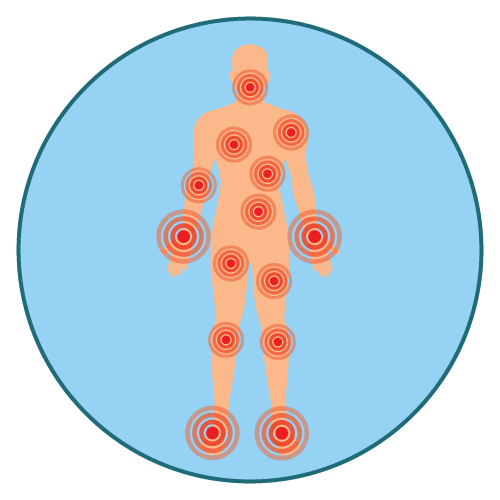| Name | Pregabalin |
| Classes |
Central Nervous System Agent Anticonvulsant / Antiepileptic Agent Psychotherapeutic Agent GABA Analogue |
| Diseases |
CNS Disorder Diabetic Neuropathy Seizure Shingles Spinal Cord Injury |
Pregabalin
Pregabalin belongs to a class of drugs called the anticonvulsants. Pregabalin binds with high affinity to the alpha2-delta site (an auxiliary subunit of voltage-gated calcium channels) in central nervous system tissues. Binding to the alpha2-delta subunit may be involved in pregabalin's anti-nociceptive and antiseizure effects.
Pregabalin is indicated for:
- Neuropathic pain associated with diabetic peripheral neuropathy (DPN)
- Postherpetic neuralgia (PHN)
- Adjunctive therapy for the treatment of partial onset seizures in patients 4 years of age and older
- Fibromyalgia
- Neuropathic pain associated with spinal cord injury
- Neuropathic Pain Associated with Diabetic Peripheral Neuropathy: In patients with a creatinine clearance of at least 60 mL/min, the maximum recommended dose of LYRICA is 100 mg three times per day (300 mg/day). Begin with 50 mg three times a day (150 mg total). Based on efficacy and tolerability, the dose may be increased to 300 mg/day within one week.
- Postherpetic Neuralgia: In patients with a creatinine clearance of at least 60 mL/min, the recommended dose of LYRICA is 75 to 150 mg twice daily, or 50 to 100 mg three times daily (150 to 300 mg/day). Begin with 75 mg twice a day, or 50 mg three times a day (150 mg/day). Based on efficacy and tolerability, the dose may be increased to 300 mg/day within 1 week.
- Management of Fibromyalgia: The recommended dose of LYRICA for fibromyalgia is 300 to 450 mg/day. Begin dosing at 75 mg two times a day (150 mg/day). The dose may be increased to 150 mg two times a day (300 mg/day) within 1 week based on efficacy and tolerability. Patients who do not experience sufficient benefit with 300 mg/day may be further increased to 225 mg two times a day (450 mg/day).
- Neuropathic Pain Associated with Spinal Cord Injury: The recommended dose range of LYRICA for the treatment of neuropathic pain associated with spinal cord injury is 150 to 600 mg/day. The recommended starting dose is 75 mg two times a day (150 mg/day). The dose may be increased to 150 mg two times a day (300 mg/day) within 1 week based on efficacy and tolerability.
- Dosing for Adult Patients with Renal Impairment: In view of dose-dependent adverse reactions and since LYRICA is eliminated primarily by renal excretion, adjust the dose in adult patients with reduced renal function.
- Angioedema(e.g., swelling of the throat, head and neck) can occur, and may be associated with life-threatening respiratory compromise requiring emergency treatment. Discontinue LYRICA immediately in these cases.
- Hypersensitivity reactions(e.g., hives, dyspnea, and wheezing) can occur. Discontinue LYRICA immediately in these patients.
- Increased seizure frequency or other adverse reactions may occur if LYRICA is rapidly discontinued. Withdraw LYRICA gradually over a minimum of 1 week.
- Antiepileptic drugs, including LYRICA, increase the risk of suicidal thoughts or behavior.
- LYRICA may cause peripheral edema. Exercise caution when co administering LYRICA and thiazolidinedione antidiabetic agents.
- LYRICA may cause dizziness and somnolence and impair patients’ ability to drive or operate machinery
Contraindication
Contraindicated in patients known hypersensitivity to pregabalin or any of its components.
None known.
None known.
 Bangla
Bangla English
English


